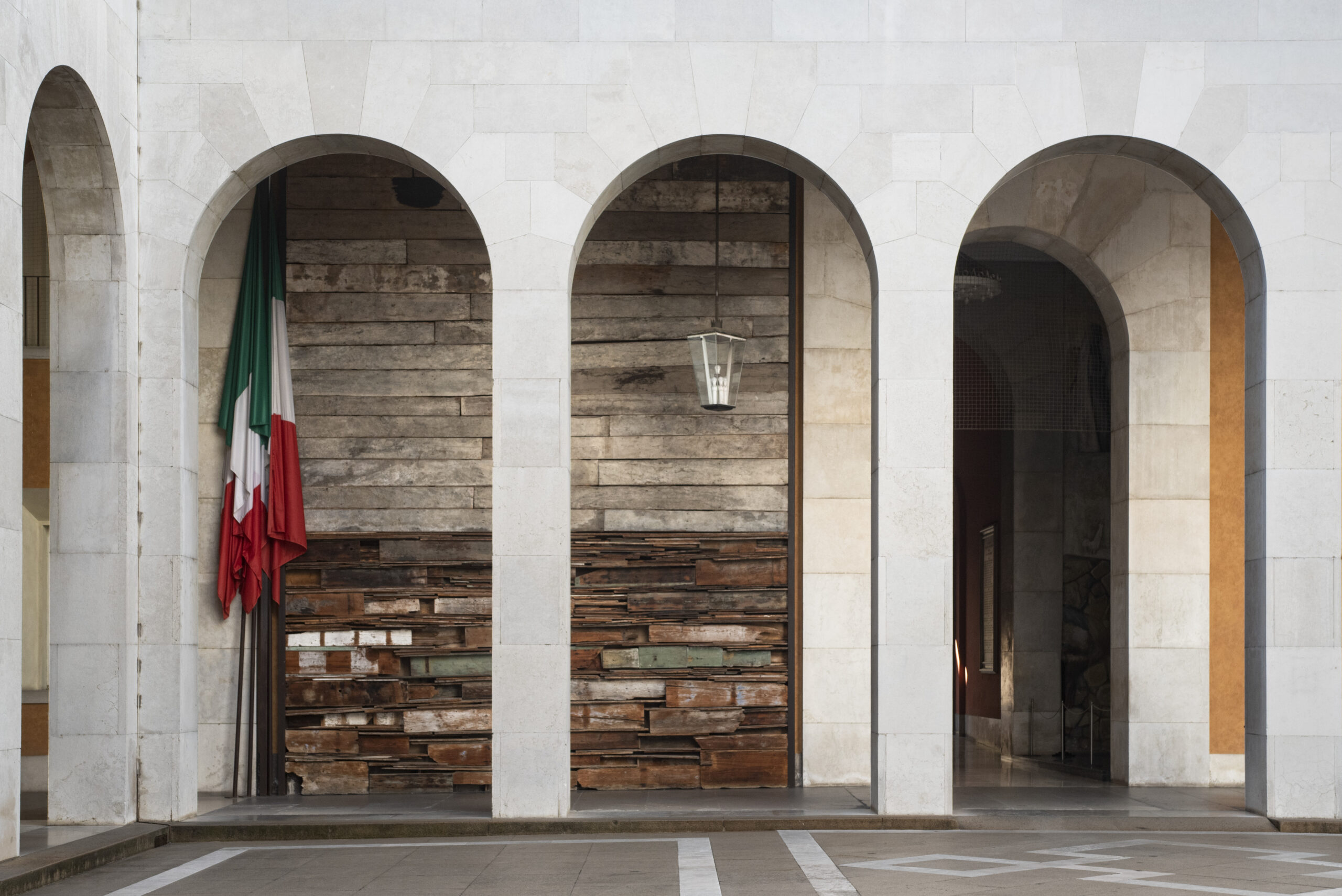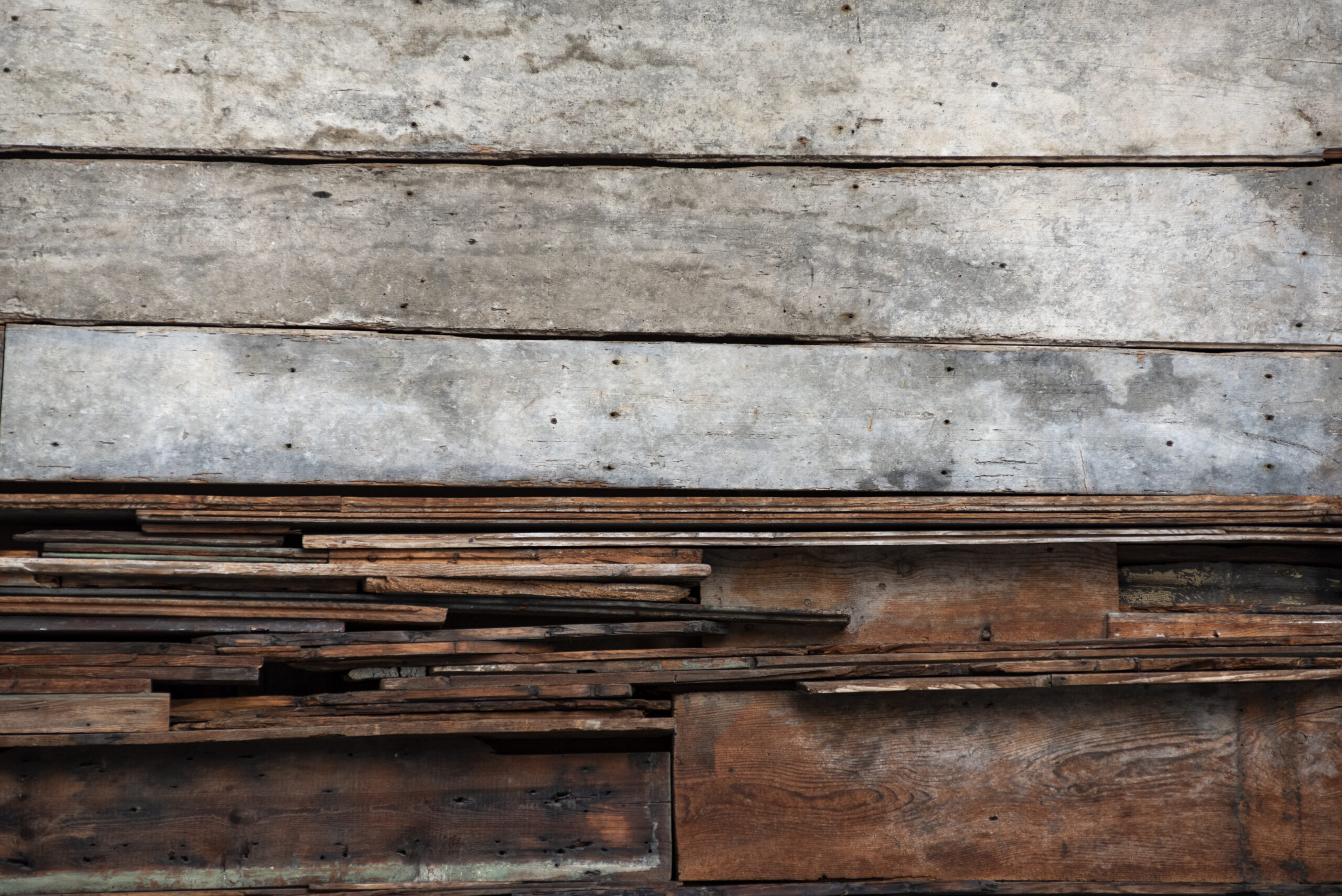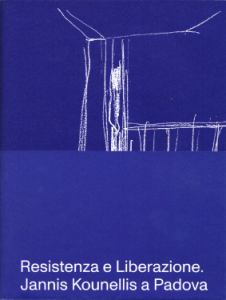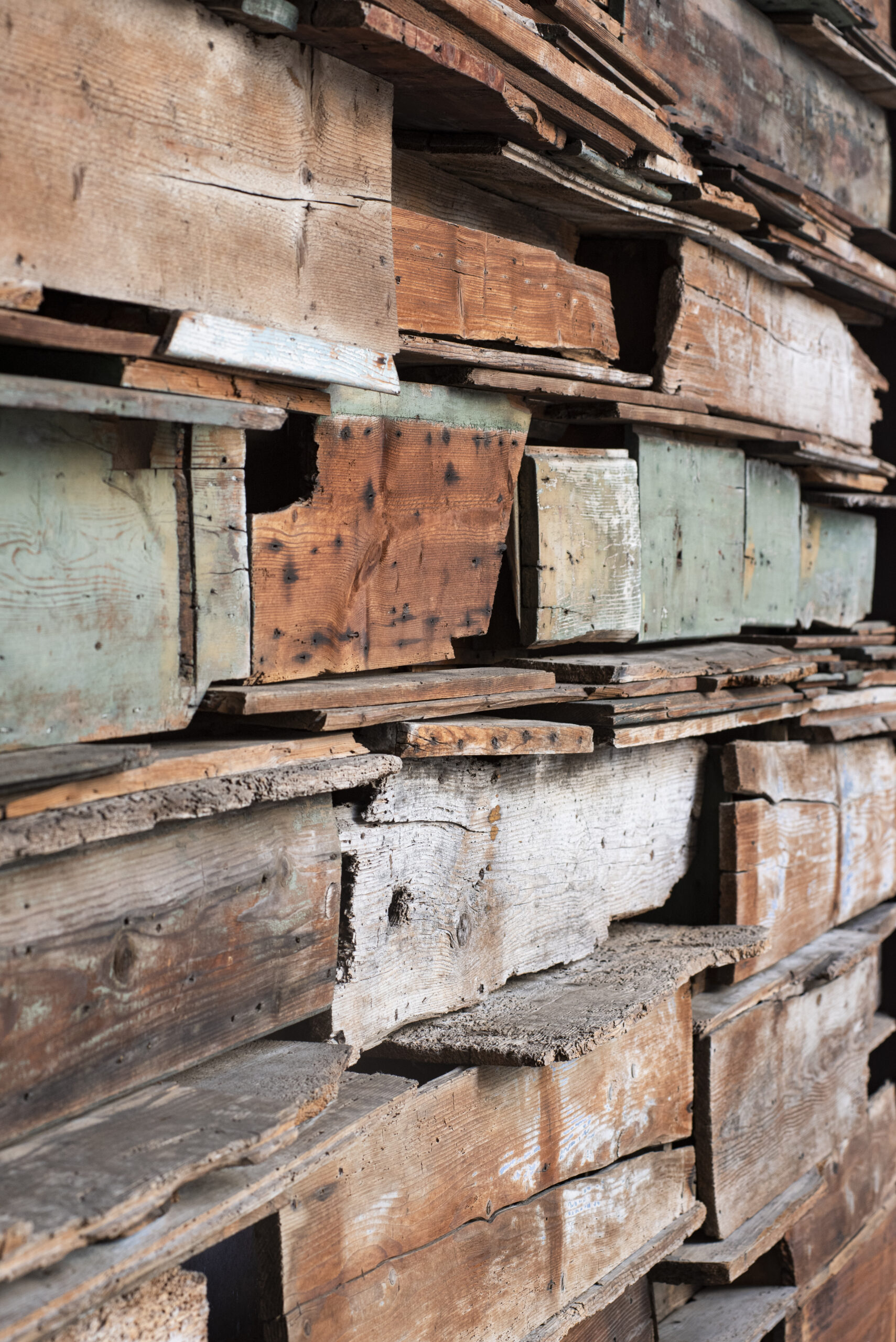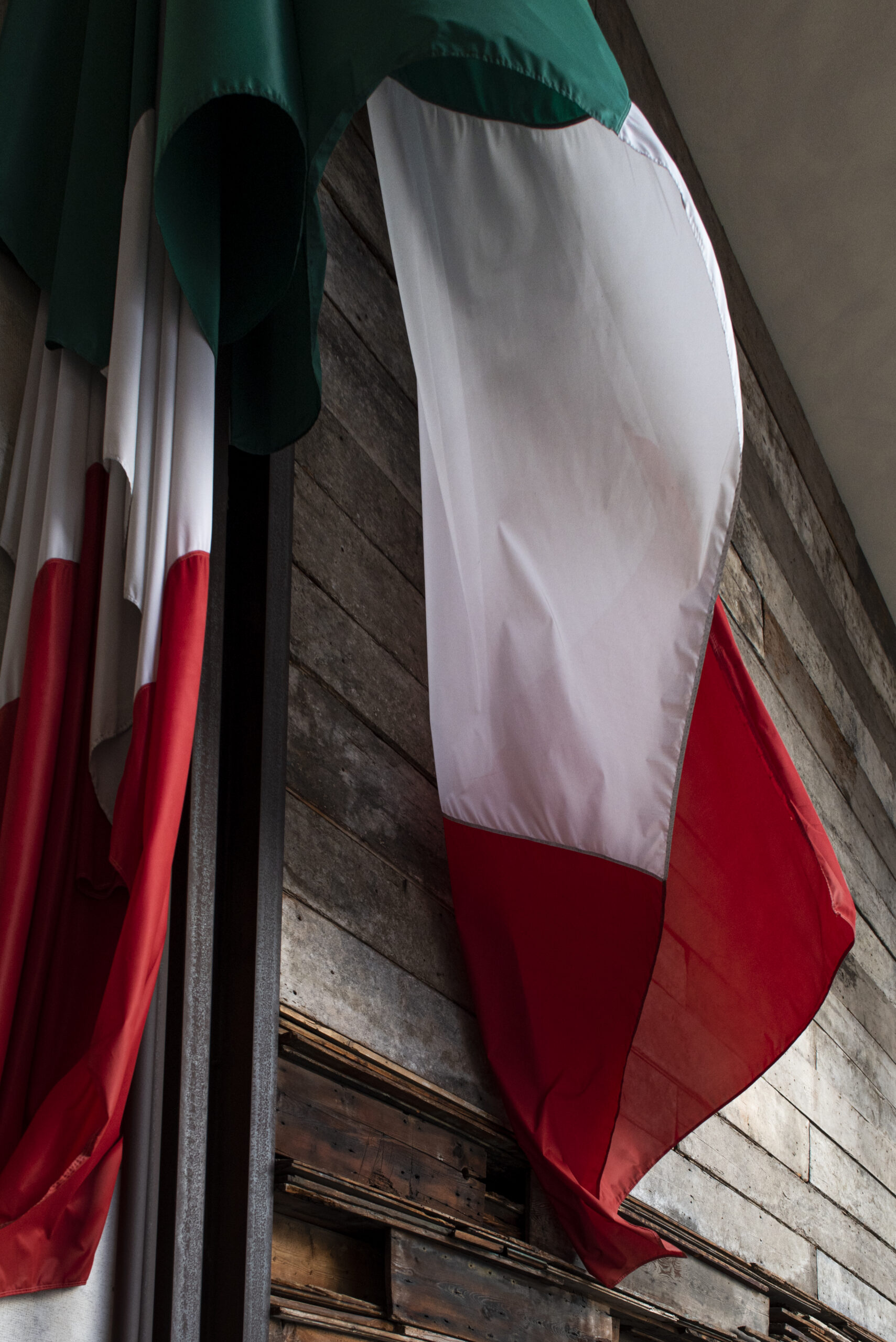Jannis Kounellis’ work Resistenza e Liberazione, commissioned in 1994 and inaugurated on 29 May 1995, was strongly backed by the University of Padua in order to commemorate the heroic deeds of three of its professors, Ezio Franceschini, Concetto Marchesi and Egidio Meneghetti, who played a leading role in the Italian resistance movement. For the artist himself, the site-specific installation represented an important stage in his career; a commemorative work that was not long in provoking heated debate in the community for aesthetic reasons. The initial bewilderment was overcome in time and today the work is a symbol of the precious value linked to the history of the university, but also to the city of Padua.
The work was made with a series of wooden beams showing the signs of age, chipped and damaged, of different colours, and assembled using a technique used by the artist himself since the 1970s. Embedded in the wall, it is composed of irregular stratifications that take on a more linear shape in the upper part. Jannis Kounellis collected old wooden beams around the outskirts of the city with the intention of giving the entire project a value linked to the territory. The choice of wood takes on a second meaning in this context, recalling Galileo Galilei’s famous chair in the Bo Palace’s Sala dei Quaranta. The work is completed by the flag of the Italian Republic, reminding us of the value, identity and history of the nation and of Italians.
The Alberto Peruzzo Foundation supported the restoration of this important work by Kounellis a little over 25 years after its creation, for participation in the 800th anniversary celebrations of the university that hosts it.
Extraordinary maintenance on the work Resistenza e Liberazione, carried out by the restorer Valentina Piovan, was planned by assessing the artist’s intentions in its execution. The degradation of the work had to be considered as intentional on the part of the artist, therefore as an ‘execution technique’. Incoherent deposits were removed, the adhesion of colour residues was checked, wooden surfaces were prepared and fixed (using non-invasive techniques), and disinfection was carried out using suitable and previously tested solvent-based biocide agents. Lastly, mapping was carried out to catalogue the elements used to create the work, indicating their position, size, composition status of the wood species used and the level of degradation in progress in order to monitor the work over time.
Special thanks
Thanks to Università degli Studi di Padova, Giovanna Valenzano, Kounellis Archive and Michelle Coudray for the partecipation.
Credits
Restoration: Valentina Piovan
Photos: Marco Furio Magliani
Texts: Vincenzo de Bellis e Guido Bartorelli
